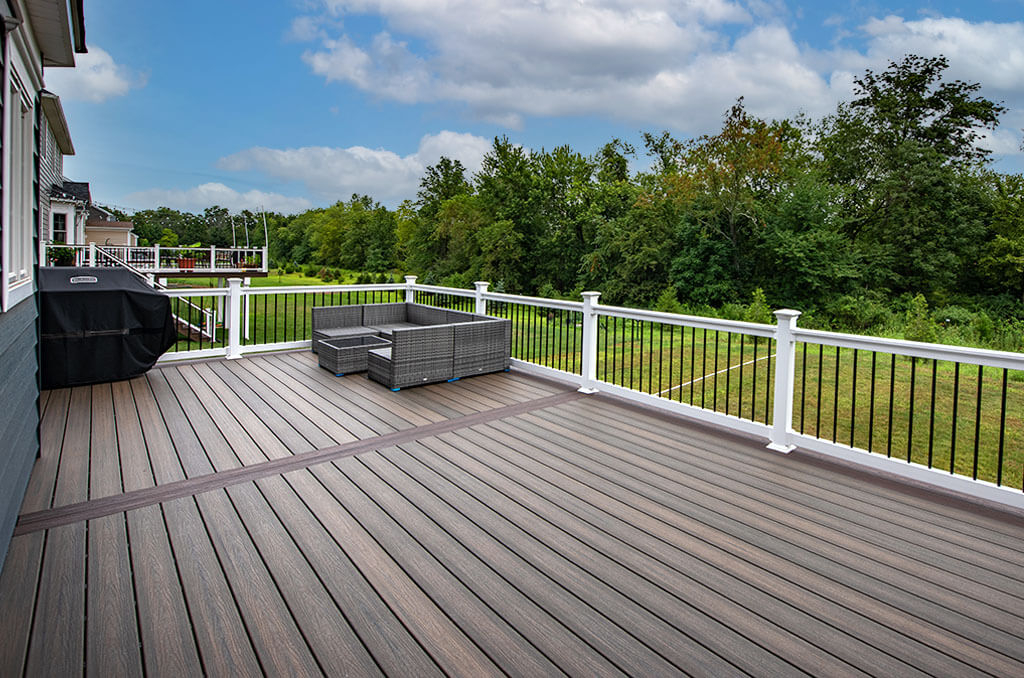Comprehensive Guide to Composite Decking Gaps
Introduction
Composite decking is a revolutionary alternative to traditional wood decking, offering durability, aesthetic appeal, and minimal maintenance. This innovative decking solution has specific installation requirements, particularly regarding the spacing between the boards, to maintain its integrity and appearance over time. This article delves deeper into the significance, considerations, and best practices for gapping in composite decking.

The Importance of Gaps in Composite Decking
Why Gaps are Crucial
Composite decking, a blend of wood and plastic, undergoes different levels of expansion and contraction compared to its timber counterpart. Incorporating gaps is essential to accommodate these fluctuations, preventing undesirable outcomes such as warping and twisting of the boards. Proper gapping is a critical aspect that contributes to the longevity and preservation of the aesthetic qualities of the deck.
Structural Integrity
Adequate spacing between the boards allows for the natural movement of the decking material, averting structural deformities and ensuring the stability of the entire deck structure. It is a preventative measure against potential damage from environmental factors and usage over time.
Manufacturer’s Recommendations
Adherence to Guidelines
It is imperative to follow the manufacturer’s instructions during composite decking installation meticulously. Strict adherence to the recommended spacing is vital to avoid compromising the warranty and address any concerns related to expansion, drainage, and water accumulation. These guidelines are designed to optimize the performance and extend the lifespan of the composite deck.
Warranty Considerations
Non-compliance with the manufacturer’s spacing recommendations can lead to the voiding of the product warranty. This could result in significant financial implications should any issues arise post-installation, emphasizing the importance of meticulous adherence to installation guidelines.
Expansion and Contraction
Moisture-Induced Movements
The dimensional changes in composite decking are predominantly influenced by the moisture content within the material rather than temperature variations. Establishing proper gaps is indispensable to avert buckling during wet conditions and to facilitate adequate drainage, thereby mitigating water-induced damage.
Seasonal Considerations
Different seasons bring varied weather conditions, impacting the moisture levels in the decking material. Proper spacing is crucial to accommodate these seasonal changes, ensuring the deck remains intact and functional throughout the varying climatic conditions.
Ventilation and Moisture Control
Airflow Requirements
Maintaining a minimum gap of 35mm is crucial to securing sufficient airflow beneath the deck. This allows the composite timber joists and deck boards to drain and dry thoroughly, averting the deterioration of the materials and safeguarding the deck’s structural integrity.
Prevention of Rotting
Proper ventilation is a preventive measure against the rotting and degradation of the decking materials. It ensures the deck’s longevity by mitigating the risks associated with moisture accumulation and lack of airflow.
Subframe Support and Material
Enhanced Support
Given its unique composition, composite decking necessitates augmented support compared to traditional timber. Placing joists at 250–350 mm intervals is recommended for the subframes of composite decks to provide the requisite support and stability.
Material Selection
The choice of subframe material is pivotal, with options such as steel suitable for elevated structures like roof terraces or balconies and plastic lumber ideal for regions with proximity to water or high water tables. The selection should align with the installation site’s specific requirements and environmental conditions.
Installation Techniques and Tools
Uniform Spacing
Employing precise installation techniques and specialized tools can ensure the attainment of uniform spacing and secure fastening of the boards. Utilization of drilling templates and strategically placing fasteners contribute to maintaining consistent gaps and achieving a polished finish.
Aesthetic Solutions
For those seeking a seamless appearance without compromising functionality, the use of hidden fasteners is recommended. These fasteners facilitate the maintenance of small, consistent gaps between the boards while enhancing the overall aesthetic appeal of the deck.
Aesthetic Considerations
Visual Appeal
While the allure of a smooth, gap-free surface is understandable, maintaining a consistent and adequate gap is paramount for the structural well-being of the deck. Striking a balance between aesthetic preferences and structural necessities is crucial to enjoying the visual and functional benefits of composite decking.
Seamless Integration
Innovative solutions such as hidden fasteners offer a compromise, allowing for a visually pleasing deck surface without sacrificing the essential spacing required for structural integrity and durability.
Conclusion
Composite decking is a versatile, innovative solution combining aesthetic appeal and durability. The meticulous attention to gapping and adherence to the manufacturer’s guidelines are pivotal to preventing structural issues and ensuring the deck’s longevity. By considering environmental impacts, employing proper installation techniques, and balancing aesthetic desires with functional requirements, homeowners can relish the benefits of a beautiful and enduring composite deck.
This comprehensive guide aims to equip homeowners with the knowledge and insights needed to make informed decisions regarding the installation and maintenance of composite decking, ensuring a seamless and enjoyable outdoor living experience.




